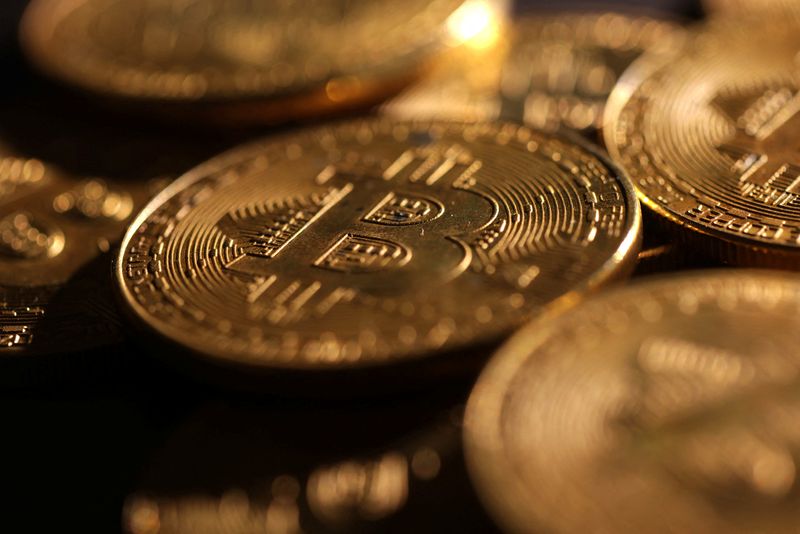United Homes Group stock plunges after Nikki Haley, directors resign
Investing.com -- Analysts are weighing whether Bitcoin could join gold as a credible reserve asset for central banks, pointing to the crypto’s maturing market structure, regulatory progress, and growing institutional adoption.
In a note released Monday, Deutsche Bank analysts said both assets have benefited in 2025 from geopolitical uncertainty, questions over Federal Reserve independence and a weakening dollar, which pushed gold to a record $3,703 an ounce and Bitcoin above $123,500 in August.
They argue that Bitcoin now shares several characteristics with gold, including limited supply, liquidity and lack of counterparty risk.
“We conclude there is room for both gold and Bitcoin to coexist on central bank balance sheets by 2030,” analysts Marion Laboure and Camilla Siazon said.
The study highlights that gold itself went through periods of high volatility before becoming entrenched in reserve portfolios, suggesting Bitcoin’s current fluctuations may not preclude its future acceptance.
Central bank demand for gold has surged, with holdings reaching about 36,000 tonnes in 2025, while at the same time de-dollarisation trends and increased interest in alternative stores of value have driven record inflows into both gold and Bitcoin exchange-traded funds.
This backdrop has reinforced the case for diversification beyond the U.S. dollar.
Bitcoin’s appeal, according to Deutsche Bank, also lies in portability and low storage costs compared to the high expenses of maintaining physical gold reserves.
The approval of spot Bitcoin ETFs in the U.S. has furthered its legitimacy, and several countries have already moved toward building national Bitcoin reserves, including El Salvador, Ukraine, Bhutan and Kazakhstan.
At the state level, Texas and Arizona have passed laws to fund their own Bitcoin reserves.
The U.S. administration has also unveiled a sovereign Bitcoin reserve plan, starting with 207,000 BTC seized from criminal cases and a proposed purchase of 1 million more coins through the BITCOIN Act.
At the same time, some risks remain. Analysts note that Bitcoin is still viewed by many as a speculative asset, with frequent sharp drawdowns, persistent cybersecurity threats, and limited use in payments.
They flag that less than 30% of Bitcoin’s activity is transactional, and several major central banks in Europe have rejected the idea of holding it. Fed Chair Jerome Powell has also ruled out U.S. central bank ownership under existing law.
Looking ahead, Deutsche Bank sets out five conditions that would allow Bitcoin to qualify as a reserve asset, including complementarity with gold, reduced volatility, no threat to the dollar’s primacy, historical precedent of gradual adoption, and enduring investor interest.
“By 2030 we predict that Bitcoin will join gold in many central banks’ official reserve balance sheets,” analysts said, as regulation, liquidity and trust continue to build.
